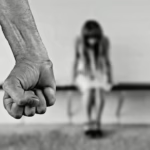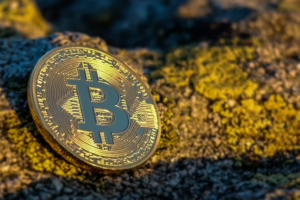Prejudice 101: A Deep Dive into Its Meaning and Consequences
Introduction
Prejudice is a complex social phenomenon that affects individuals and communities across the globe. At its core, it refers to preconceived opinions or judgments about individuals based on their perceived characteristics, such as race, gender, sexual orientation, or socio-economic status. This article aims to explore the multifaceted nature of prejudice, its psychological and sociological underpinnings, and its profound consequences on individuals and societies as a whole.
Definition of Prejudice
Prejudice is characterized by negative attitudes toward a specific group, often rooted in stereotypes and misinformation. According to psychologists, prejudice can manifest in various forms, including cognitive (beliefs), emotional (feelings), and behavioral (actions) dimensions. It can be both explicit—consciously endorsed beliefs or attitudes—and implicit—automatic and often unexamined biases that influence our behavior and decisions without our awareness.
Historical Context
The concept of prejudice has existed for centuries, with notable historical extremes, such as racial and ethnic discrimination, that have left indelible marks on societies. From the segregation of races in the United States to the Holocaust in Europe, the consequences of prejudice have often been devastating. Understanding this history is crucial for grasping how prejudice continues to shape social dynamics today.
The Roots of Prejudice
Psychological Theories
Several psychological theories contribute to our understanding of the origins of prejudice:
-
Social Identity Theory: Proposed by Henri Tajfel and John Turner, this theory posits that individuals derive part of their self-concept from their membership in social groups. The in-group versus out-group dynamic can lead individuals to favor their own group while discriminating against others.
-
Scapegoating Theory: Developed by psychologist John Dollard, this theory suggests that individuals may project their frustrations or failures onto a vulnerable group. This can lead to the dehumanization of the out-group and reinforce harmful stereotypes.
-
Cognitive Dissonance: Proposed by Leon Festinger, this theory suggests that when individuals experience a conflict between their beliefs and their behaviors, they may change their beliefs to justify their actions. This can perpetuate existing prejudices as individuals strive to maintain consistency in their worldview.
Sociological Aspects
Sociology provides another lens through which to analyze prejudice:
-
Institutional Discrimination: Prejudice can be reinforced through social institutions, including education, health care, and law enforcement. Systematic biases embedded within these systems can perpetuate inequalities and impact marginalized communities.
-
Cultural Norms: Societal norms and values can shape prejudiced attitudes. Cultures that celebrate diversity may foster tolerance, while those that promote homogeneity may cultivate prejudice.
-
Socialization: From a young age, individuals are socialized into their cultural norms. Family, peers, and media can all play significant roles in shaping one’s attitudes toward different groups.
Manifestations of Prejudice
Racism
Racism is perhaps the most overt form of prejudice, characterized by the belief that certain races are inherently superior or inferior. It can manifest in both individual attitudes and institutional policies, leading to profound societal injustices. For example, systemic racism can result in unequal access to education, employment, and legal protections.
Sexism
Sexism refers to prejudice based on a person’s sex or gender. It can manifest in various ways, including wage disparities, unequal representation in leadership roles, and societal expectations. The consequences of sexism can limit opportunities for individuals and perpetuate gender-based violence and discrimination.
Homophobia
Homophobia encompasses derogatory attitudes and discrimination against individuals based on their sexual orientation. This form of prejudice can lead to social isolation, mental health issues, and violence against LGBTQ+ individuals. Legal recognition and social acceptance have improved in many areas, yet deep-seated prejudices still persist.
Ageism
Ageism involves prejudices against individuals based on their age, often targeting older adults. This form of prejudice can manifest in negative stereotypes about aging and can lead to exclusion from different segments of society, including the workforce.
Religious Prejudice
Religious prejudice involves discrimination against individuals based on their religious beliefs. This type of prejudice can lead to hate crimes, social exclusion, and can exacerbate tensions within multicultural societies.
Consequences of Prejudice
Individual Consequences
The impact of prejudice on individuals can be profound. Those who are targets of prejudice may experience:
-
Mental Health Issues: Studies indicate that individuals who face discrimination are at a higher risk for anxiety, depression, and low self-esteem. The stress of navigating a prejudiced environment can take a significant toll on mental well-being.
-
Social Isolation: Prejudice can lead to social exclusion, where individuals feel disempowered or unwelcome in certain spaces. This can hinder social connection and support networks.
-
Physical Harm: In extreme cases, prejudice can result in violence, including hate crimes, which can lead to physical injury or even death.
Societal Consequences
Prejudice does not only affect individuals; it has broader implications for society:
-
Social Cohesion: High levels of prejudice can erode social trust and cohesion, making it difficult for communities to work together. This can hinder civic engagement and reduce social capital.
-
Economic Costs: Prejudice can also have economic repercussions. Discrimination can lead to unequal access to job opportunities, resulting in a workforce that does not fully utilize talent and skills.
-
Legal and Political Ramifications: As societal divisions grow, political polarization can increase, leading to legislation that perpetuates discriminatory practices. This can create cycles of injustice that are difficult to break.
Addressing Prejudice
Education and Awareness
One of the most effective ways to combat prejudice is through education. Educational programs that foster understanding and empathy can help individuals recognize and challenge their biases.
-
Diversity Training: Organizations can implement diversity training programs to promote awareness and inclusivity.
-
Curriculum Changes: Schools can incorporate education about social justice, cultural competence, and the history of discrimination into their curricula.
Policy Changes
Policy reforms are essential for addressing systemic issues related to prejudice.
-
Anti-Discrimination Laws: Strengthening and enforcing laws that protect against discrimination is critical for creating a more equitable society.
-
Affirmative Action: Hiring practices that actively seek to include underrepresented groups can help mitigate the impacts of past prejudices.
Community Building
Building inclusive communities can provide support and empowerment for marginalized groups, fostering resilience against prejudice.
-
Community Dialogues: Facilitating open discussions about prejudice can help to bridge gaps between different groups and promote understanding.
-
Support Networks: Establishing support networks for individuals facing discrimination can provide essential resources and solidarity.
Conclusion
Prejudice is a pervasive issue that affects individuals and societies in myriad ways. While its roots are deep and complex, the consequences can be profound and far-reaching. By understanding the mechanisms that underlie prejudice and working toward inclusive solutions, we can foster more equitable communities. The fight against prejudice requires collective effort, awareness, and a commitment to social justice.
References
-
Tajfel, H., & Turner, J. C. (1979). An integrative theory of intergroup conflict. In W. G. Austin & S. Worchel (Eds.), The Social Psychology of Intergroup Relations (pp. 33-47). Brooks/Cole.
-
Dollard, J., et al. (1939). Frustration and Aggression. Yale University Press.
-
Festinger, L. (1957). A Theory of Cognitive Dissonance. Stanford University Press.
-
Allport, G. W. (1954). The Nature of Prejudice. Addison-Wesley.
-
Sue, S., Cheng, J. K. Y., Saad, C. S., & Cheng, J. (2012). Asian Americans in the Psychology Literature. American Psychologist, 67(7), 532-548.
-
Crenshaw, K. (1989). Demarginalizing the Intersection of Race and Sex: A Black Feminist Critique of Antidiscrimination Doctrine, Feminist Theory and Antiracist Politics. University of Chicago Legal Forum, 1989(1), 139-167.
-
Verkuyten, M. (2005). The Social Psychology of Ethnic Identity. Psychology Press.
-
Pager, D., & Shepherd, H. (2008). The Sociology of Discrimination: Racial Discrimination in Employment, Housing, Credit, and Consumer Markets. Annual Review of Sociology, 34(1), 181-209.
-
Phelan, S. C., & Link, B. G. (2015). Is Stigma a Fundamental Cause of Health Disparities? The American Journal of Public Health, 105(1), 69-70.
-
United Nations. (2008). United Nations Declaration on the Rights of Indigenous Peoples.
This structured exploration of prejudice highlights its complexities and emphasizes the importance of combating it through education, policy reform, and community engagement. These efforts are vital in fostering a more equitable and just society for all.

























Add Comment